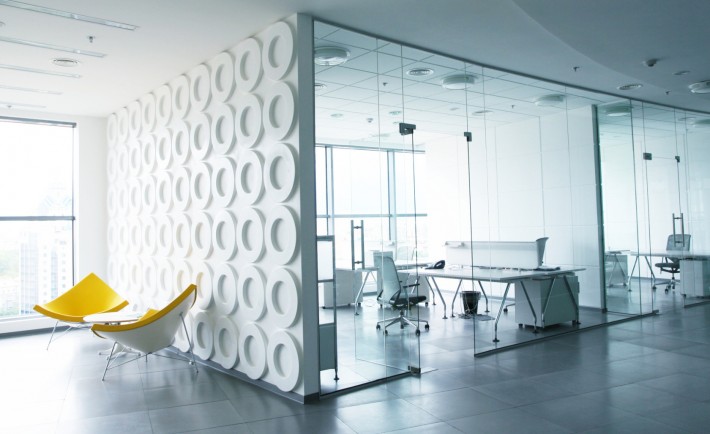
The surroundings we find ourselves in can influence our moods and behaviors much more than we realize. Dimly-lit spaces can make us feel more relaxed and sleepy, while loud, bright areas can be distracting or even anxiety inducing. And many industries utilize the psychology of space, color, and sound to influence the behaviors of individuals within those spaces. Fast-food chains, for example, often choose the color red in their decorating because it subconsciously encourages people to leave quickly.
And of course, the design of office spaces is incredibly significant if you want to get the most from your employees. Being a manager or new entrepreneur who places office space design low within the ranking of your priorities can unfortunately cause a number of unforeseen consequences. Generally speaking, we spend a great deal of our lives in our work environment – approximately almost as much time as we’ll spend at home in any given week. Ensuring that your office is designed to be a space where every employee feels productive, safe, and comfortable can dramatically improve workflow. Even if your budget might not match that of famously employee-friendly companies like Netflix or Google, simple ideas and changes can dramatically improve your employee’s experience with work.
Want to improve your office design? Look for office space planning tips and tricks below that can help you increase employee satisfaction and productivity.
Don’t Box In Your Employees
There’s a reason that cubicles feature heavily in anti-work comedies like Dilbert and the feature film Office Space. They stifle light, creativity, and increase clutter. According to various studies, increasing natural light can improve productivity, mood, and health. Most companies have begun to create streamlined office-spaces in rows without dividing walls, or clustered bullpens around windows and sources of natural light.
Organize By Department
Different departments in your new business have their own goals: and their workstations should emphasize this fact. But the goals of one department could interfere with the work of another if it’s placed too close. For example, departments needing to make frequent calls to customers or leads could be distracting to those who need unbroken focus. Emphasize workflow by placing departments who must speak or interact frequently close together, and give them easily-accessed areas for daily collaboration.
Give Thought to Communal Areas
All of your employees will need their own desks or offices; but communal areas are just as important. Most people can’t (and shouldn’t) stare at a computer screen for all eight hours of a workday. But rather than shoving communal areas off to the side, placing some communal areas near workspaces in such afashion that they can facilitate brainstorming and work-sharing can increase productivity. For example, providing coffee near some sofas or a multi-desk area close to the bullpen rather than in a closed area further away can be a dramatic improvement.
Aim For Minimalism and Simplicity
Visual clutter can be distracting, and even claustrophobic for some employees. While your office design doesn’t need to be modern, you should absolutely aim for minimalism: showing clean surfaces, and utilizing negative space well. Light, open floor plans and streamlined pathways. This means that your office should not have an overabundance of art or decor, and that employees should be encouraged to keep clean workspaces.
The Bottom Line
When positively impacting the mood and productivity of your employees can be as easy as changing the office layout, there’s no reason not to give more forward-thinking office design a try! Veer away from cubicle design, and give consideration to your office layout, lighting, furniture, and colors. Whenever possible, go to your employees for their thoughts on the design, and emphasize a design which helps make daily tasks and processes easier to accomplish.



